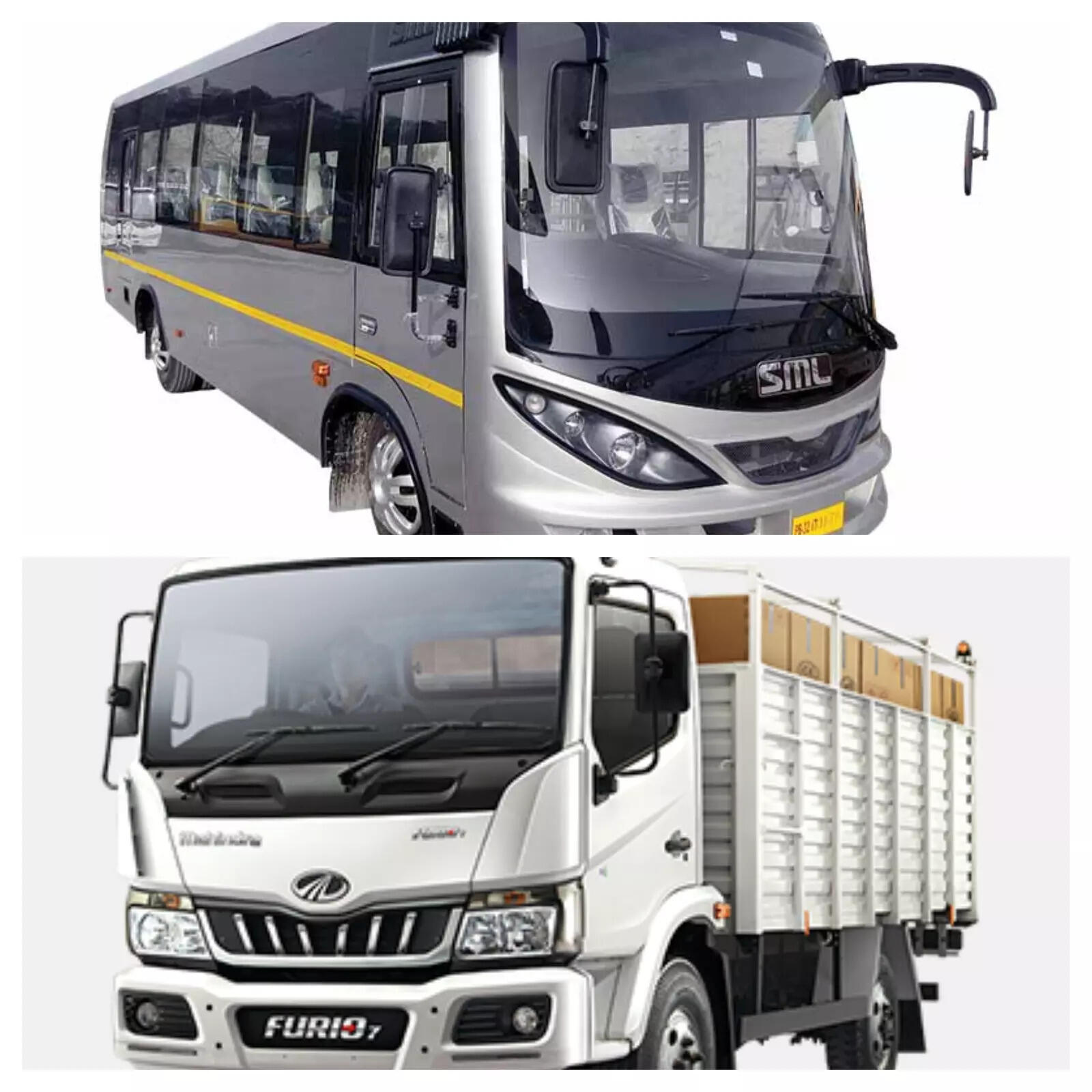[ad_1]

New Delhi: In a strategic move to strengthen its foothold in the I&LCV and bus segments, Mahindra & Mahindra (M&M) is set to acquire 58.96 per cent of SML Isuzu for ₹555 crore. This acquisition aims to unlock synergies across operations, enhancing M&M’s presence in the market where SML Isuzu holds a strong position.
The acquisition will focus on optimising costs, sharing platforms, streamlining aggregates, enhancing supplier networks, and improving overall operations, the company’s management said on Monday.
Anish Shah, CEO of the Mahindra Group mentioned that the company aims to expand the share of over 3.5 T vehicles in the Mahindra Trucks and Bus Division (MTBD) from a modest 3 per cent in FY25 to double it to 6 per cent, with a long-term target of reaching 10 to 12 per cent by FY31. The goal is to further increase this share to over 20 per cent by FY36.
“We are mindful that the M&HCV segment is very competitive, and we have been very realistic about the growth aspirations we have,” added Rajesh Jejurikar, ED and CEO – Auto and Farm Sectors, M&M.
Organisational structure
As part of the transaction, Mahindra will acquire Japan-based Sumitomo Corp’s 43.96 per cent stake in SML Isuzu, along with Isuzu Motors’ 15% stake. Additionally, the company will launch a mandatory open offer to acquire up to 26 per cent more of the company’s shares, in compliance with local regulations.
Amarjyoti Barua, Mahindra Group CFO confirmed that there are no plans to form a new entity and SML Isuzu will remain a listed company after the acquisition.
“The business as one will be run operationally as one. But entity rationalisation is not part of the game plan,” he said.
Regarding employee retention, Mahindra said that while it “may need to adjust a few roles, there is no question of retrenchment”.
Punjab factory
SML Isuzu’s manufacturing plant in Punjab operates at 65 per cent to 70 per cent capacity utilisation. Rajesh Jejurikar, ED and CEO – Auto and Farm Sectors, M&M highlighted that the plant is “well-designed and runs efficiently.” While some investment is needed, it is not expected to be substantial.
Investment is expected as capacity ramps up and will be funded through the company’s internal cash accruals.
“One of SML Isuzu’s strengths is that many of its aggregates are manufactured in-house, which contributes to a more competitive cost structure. Now, with our high-quality engines at efficient costs, there is potential for cross-deployment in various areas,” Jejuriker said.
Export is not a priority at the moment but will be considered in the future.
Focus on bus segment
With SML, Mahindra will gain a strong presence in the school and staff bus segments. Combined, the two company’s share in school, staff, and executive coach buses comes to around 21 per cent.
However, neither SML nor M&M is focused on state transport undertaking (STU) buses or large luxury inter-city buses, and don’t intend to enter those areas.
“Cracking the heavy commercial vehicles (HCV) industry takes time,” Vinod Sahay, President and CPO (Chief Purchase Officer) at APF and President for Aerospace & Defence, MTBD and CE noted.
According to him, the bus industry offers stability compared to the highly cyclical goods segment of the CV industry. While the cyclicity in trucks is directly tied to the gross body weight (GBW) of the vehicle, the bus market remains steady—it doesn’t grow significantly, nor does it experience sharp declines.
“This stability, coupled with SML’s strong market share in buses, helps de-risk the business model,” he said.
Platform sharing and sourcing
Sahay shared that SML has a “strong” range of alternative fuels– CNG– and is at an advanced stage of preparations for its EV bus launch.
“MTBD is absent in this area. We are working on its development, focusing on optimising cross-platform sharing of aggregates and cabins to enhance efficiency,” he said.
Jejuriker added that with Mahindra’s expertise on EVs in various other segments, it will look to improve costs.
He further clarified that the company is not looking at any continued support from Isuzu. “All the IPs are owned by SML right now, and it has its own R&D and technological capability built into the company.”
Further, Mahindra is confident of adding value through its supplier relationships. For instance, some specialised CV suppliers cater exclusively to CV players which limited Mahindra’s overall negotiation leverage. However, with SML’s involvement, the combined sourcing is expected to significantly increase, providing stronger negotiating power with these suppliers.
Secondly, for common industry aggregates like tyres and batteries, SML brings its combined sourcing power, leveraging both SML’s and Mahindra’s capabilities.
“A lot of our sheet metal and supplies for Swaraj we procure locally in the Punjab ecosystem,” he said.
Dealer network
To start, one key area of focus is leveraging complementary networks for both brands, particularly in after-sales service.
“Both brands offer excellent products. However, one challenge we face in the market is that our network isn’t as extensive as that of the market leaders,” Sahay noted.
Together, both brands have over 100 dealers and around 200 touchpoints, including service centers.
[ad_2]
Source link





